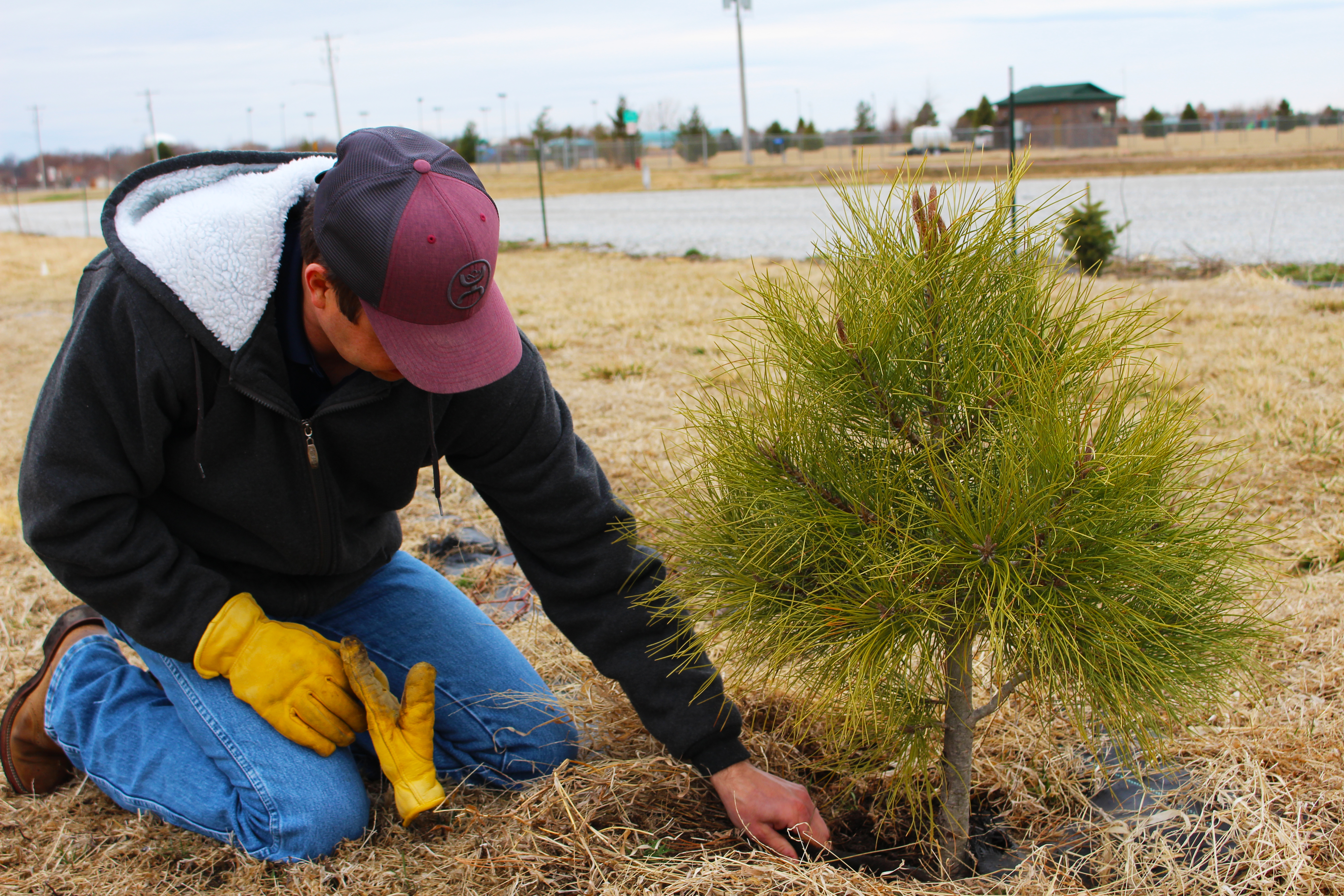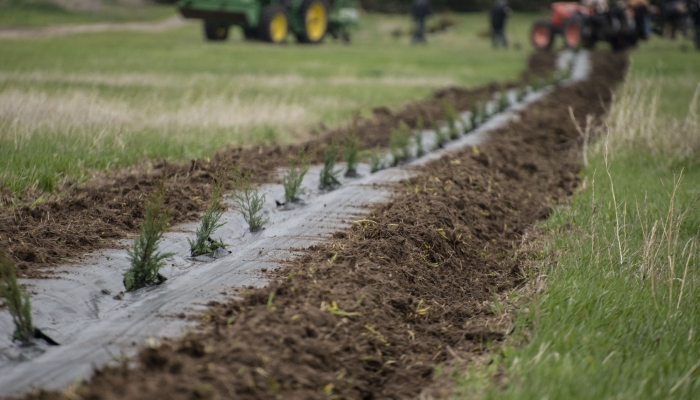Weed Barrier Fabric Mulch
How it Works
Weed barrier fabric mulch helps conservation trees excel in both survival and growth rates.
- Weed barrier fabric eliminates vegetative competition with newly planted trees/shrubs by acting as a mulch.
- Soil moisture is conserved by the reduction of evaporation. Water is able to penetrate the fabric, but sunlight cannot, so vegetation will not grow through it.
- Fabric barrier dramatically increases tree and shrub survival, providing effective control of weeds and grasses.
- It’s made from a durable, woven fabric with a texture similar to burlap.
Cost & Cost Share
Fabric & Installation: Customers will be billed for actual feet after job is completed. 2024 cost: $0.88 per linear foot + tax, with a service fee of $25 per installation site.
Take advantage of the 75 percent cost share available for weed barrier and installation. You may sign up for cost-share through the Upper Big Blue NRD office or at your local NRCS office.
Guidelines
These guidelines are established to distinguish the responsibilities of both the landowner and the Upper Big Blue NRD.
Weed Barrier…
- Will be installed by the NRD contractor only on ground that has been properly prepared prior to the crew’s arrival.
- Cannot be installed by a contractor on cross slopes 5% or greater
- May be installed before trees are hand-planted by landowner. Charge will be the same.
- Can’t be installed with cottonwood or walnut trees in the rows.
- Will be installed for customers who utilize the barrier for tree planting only.
NRD Contractor
- Will only install weed barrier on seedling plantings that are planted by NRD crews.
- Contractor is available only during spring.
Site Preparation
Site preparation is important for seedling survival, growth, and proper fabric application. Inadequate site preparation makes fabric installation impossible.
Soil must be plowed or chiseled to a minimum of 12” depth followed by discing or rototilling to remove any clods or sod. When a desirable cover like native grass exists, cultivate a minimum 12’-wide strip at each tree row location. A minimum of 10’ must be allowed between rows. Do not disturb the native grass between the tree rows.
Maintenance
After installation, some weeds and grasses will emerge adjacent to trees. It’s important that you walk the tree rows 2-3 times during the growing season to pull weeds and grasses that are growing adjacent to your trees. Be sure to keep the edges of the fabric covered with soil.
If weeds grow tall enough to fall over the fabric and trees, mow between the tree rows and along the fabric edges. In most other cases, leaving vegetation between rows will reduce damage from dehydrating wind and provide excellent wildlife habitat.
Mow in the fall to remove winter habitat for rodents who could damage your trees. Planting native grass between rows will suppress weed growth.
After a few years, check the trunks of your trees to make sure the fabric isn’t too close to them. As trees grow and the trunks expand, they’ll likely get larger than the hole that was initially cut in the fabric—this is called girdling. You may need to cut the fabric away from the trunks as the trees grow to prevent strangulation.


